
Media and intellectual elites continue to add spin to dignify a criminal war of aggression that has resulted in unconscionable suffering among the Yemeni people.
In April 2022, a temporary truce was signed between the warring parties in Yemen, which ended in October, though fragments of it are still operational.[1]
The truce in no way addressed the crystal clear causes of mass death, starvation and aggression in Yemen—namely, Western-Arab aggression and brute force.
But the so-called “truce” nevertheless had its clear effects: It allowed for the coalition of powerful Arab and Western countries attacking Yemen to radically expand and enhance occupation, military advancement and plundering (as well as for them a largely irrelevant bonus of somewhat alleviated civilian casualties, useful for their PR purposes).
The media reporting about the truce and its implementation one year after its implementation teaches us a great deal about how refined propaganda works to achieve violent state goals, with justice and legality entirely disregarded.
In approaching this topic, we must remember that, when two of the leading propaganda systems—the Western and Eastern—agree in their propaganda, it is overwhelmingly difficult to break free from its illusions.
The fact is that the Western bloc as well as the Eastern (led by China) are every bit as interested in maintaining their Saudi and Emirati ties, though the Western system is setting the agenda on every term. The Chinese merely refuse to expose what would otherwise be splendid material for their information warfare against our hypocrisy. Accordingly, the propaganda system is unanimous and in fact global regarding the war in Yemen.
Thus, there are two versions of the Yemen “peace” process: what has happened in the real world—the actual facts—and the radically distorted Washington-Riyadh version of the process.
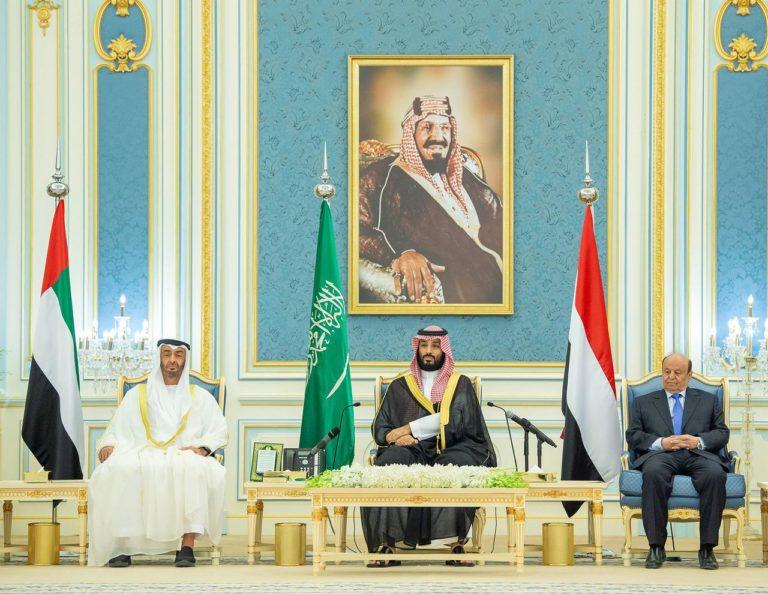
The Prohibited Background
In approaching this issue, it is necessary to first give the reader a description of the nature of the colonial violence against Yemen, which has been the hallmark of the country’s history and, of course, the war of aggression waged against it since 2015.
Until 2011, a Washington-Riyadh-controlled puppet ruled Yemen through an effective military death-squad-managed society. Massive nationwide demonstrations erupted against the regime and, naturally, the Arab-Gulf dictatorships intervened to stifle genuine general democratic participation in the political system, putting in place yet another puppet, Abdrabbuh Mansur Hadi, subordinated to the West and the Arab Kingdoms.
The Arabs and the West set up fraudulent elections, in which their lapdog “won 99.8 percent of the vote—a result which would make even Bashar al-Assad or Saddam Hussein blush” (Middle East Monitor), banning elections ever since.
The sole purpose of the Hadi regime, just like his predecessor, was “to implement Washington-consensus neoliberal reforms at a difficult political and economic time,” with the starving population obviously being irrelevant, as a major Western study on the topic noted. You will notice that this is what has constantly been referred to as Yemen’s “legitimate” and “internationally recognized” government, without anyone raising an eyebrow.[2]

In 2014 and 2015, a popular revolution occurred, involving multiple political and regional parties (though ubiquitously referred to as “Houthi” in the propaganda system, which I will use henceforth simply because of practical reasons).
As two leading Middle Eastern scholars noted in a technical report on the revolution, “For the Gulf’s undemocratic monarchs, a genuine popular movement on their southwestern border was worrisome,” and naturally they “prioritized the concerns of foreign actors over the substantive demands of the millions of Yemenis who mobilized for change.” In short, everything was fine.
Meanwhile, oil and mineral profits were flowing to American and European corporations, Western forces could control the strategic nodes, all dissent was stifled, and the population was starving. The harmony was, however, to be unacceptably ruined by popular indigenous demands, political participation, peasant groups and genuine popular political parties—a dreaded threat which the “Free World” had to smash, to be sure.[3]
The U.S., most European countries and especially the UK and France, joined with Saudi Arabia, the UAE, Israel and a host of other nations (henceforth the “Coalition”) in March 2015 to openly launch a war of aggression and occupation in Yemen, something which continues to this day with unrelenting brutality and death.
Internal documentation from the U.S. State Department during the same period, conceded that “the U.S. had been pushing the Saudis and its Gulf partners,” along with the Europeans, “to be more active in policing their own region,” thus “protecting” Western “energy and security interests in the region.” No doubt the same kinds of discussions were happening among the Russian General Staff before invading Ukraine.[4]
As the war started, the Middle Eastern press regularly noted the obvious, namely, that “The war in Yemen will be fought with Western arms.”[5] Sure enough: UN and EU advisers estimate that the Coalition has been “heavily armed by the United States and Europe with arms amounting to” an absolute minimum of “$100 billion” (it is actually much higher than that), and even $200 billion is probably a low estimate, too.[6]
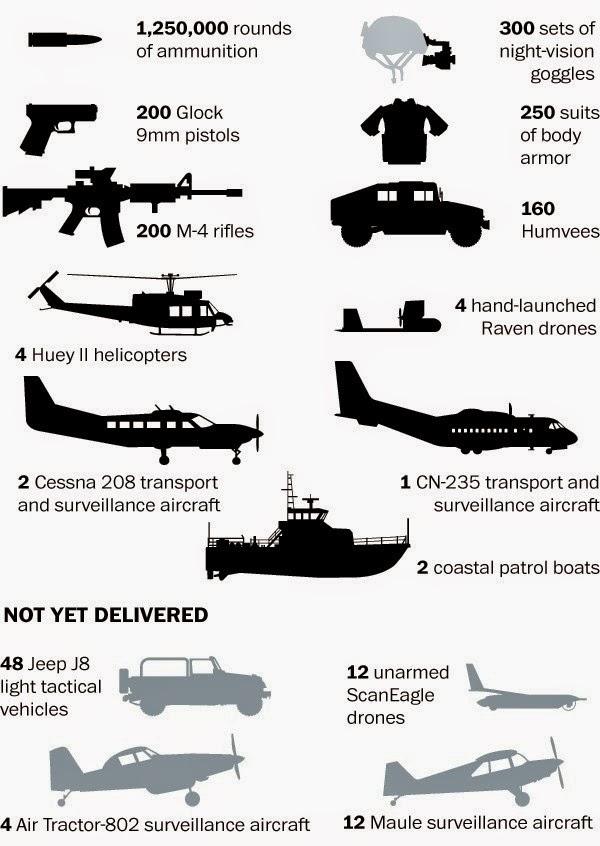
The UN, which is after all filled with nations all seeking to align with the Arab kingdoms, passed resolutions establishing a weapons embargo on Houthi. These resolutions were then scandalously fabricated by the Coalition to be a carte blanche for the attack, with the media refusing to expose the fraud. The resolutions, of course, gave no justification, and prohibited “obstructing the delivery of humanitarian assistance to Yemen or access to, or distribution of, humanitarian assistance in Yemen” (Res. 2216), and the Security Council called “on all member States to refrain from external interference which seeks to foment conflict and instability and instead to support the political transition” (Res. 2201). Obviously that had to go.[7]
Comparing Western aid to Yemen, its arms sales to the Coalition states has been worth, on average, 55 times more. The lessons we learn from this illustration of enlightened humanitarianism is that violence and terrorism in fact works, and pays off.[8]
So far, perhaps half a million people have been killed, almost the entire population is under the immediate threat of famine caused by a Coalition blockade aiming to inflict maximum pain, while it occupies and plunders the country. So much for the background: We now turn to the so-called “truce,” starting on April 2, 2022.
War Is Peace
The truce identified a “halt to all offensive ground, aerial, and maritime military operations, inside and outside of Yemen, and a freeze in current military positions on the ground,” as the primary step in fulfilling the general peace process.[9] That feature of the treaty is redundant, since military attack and advancement in occupied territory is already supposed to be prohibited by international law and treaties—a considerable nuisance for us.
On April 3, one day after the signing of the accord, Yemeni military sources reported that Coalition “warplanes and reconnaissance aircraft” operated in multiple Yemeni provinces, along with shelling of a host of towns. Thus, one could have predicted the future of the truce before the ink had even dried. Western press found no interest in reporting on the incidents.[10]
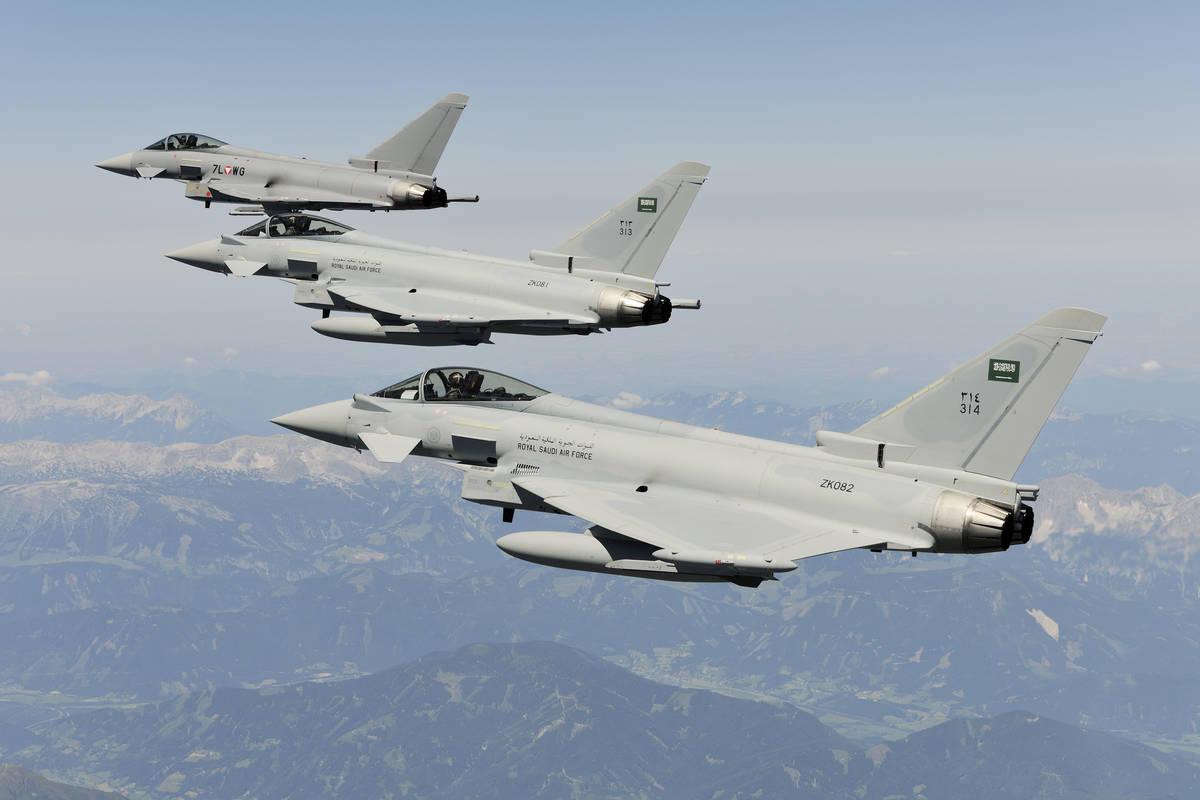
Incidentally, at about the same time, the Washington-Riyadh figurehead President Hadi was swapped out by his masters, after having loyally served his role. He was replaced with yet another unelected, externally imposed military Junta consisting mainly of army generals and officers from Saudi Arabia and the UAE—the countries attacking Yemen. (The head of the junta, Rashad al-Alimi, happened to be the highest paid politician on the planet.)

The equivalent scenario would be Russia successfully conquering Ukraine, imposing as President and leadership of Ukraine a military junta drawn from the top Russian and Belarusian military brass, with all of Russian media going along, of course. This event went literally unreported in the major press, in yet another Orwellian triumph. Furthermore, one of the main excuses for the brutal attack against Yemen, was for the lawless aggressors to re-impose the “legitimate” (unelected) Hadi government.
Now, however, the primary public motivation for the attack was suddenly quietly abandoned, revealing that the excuse was total fraud to begin with. Nevertheless, the media relentlessly and ubiquitously still refer to the junta as the “internationally recognized government,” pretending nothing happened. The disgrace of the so-called “free press” could not be more spectacular.[11]
Between 2016 and 2021, a year before the truce, the Coalition stole Yemeni oil worth an estimated $14 billion, a staggering number considering Yemen is one of the absolute poorest countries on the planet. That was not going to stop after the truce.[12] Thus, in May 2022 (just a month after the truce went into effect), the Junta sold the oil-rich fields in Shabwa to the UAE for free exploitation, thus further diverting “tens of thousands of barrels of oil per day” from the Yemeni people.
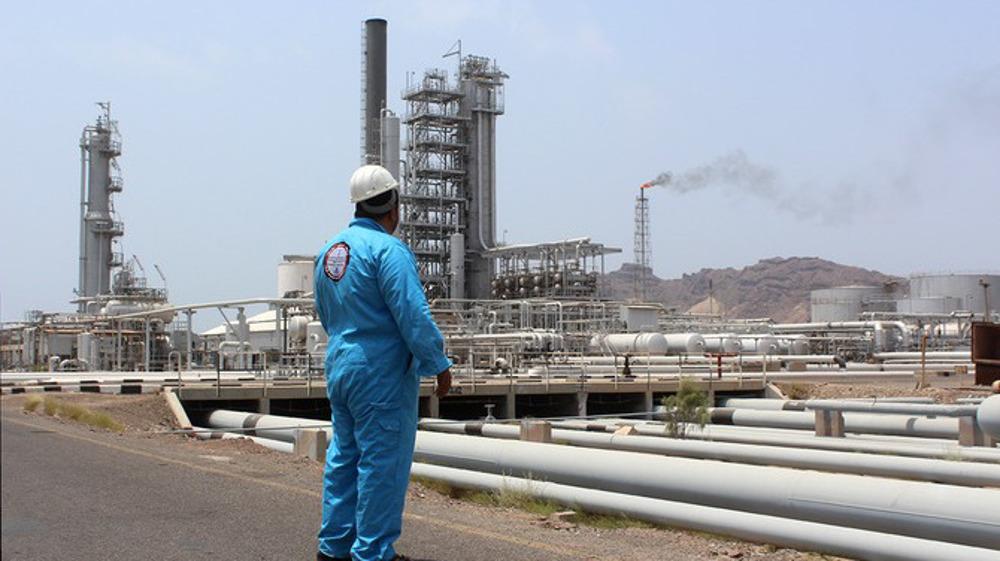
Just a few days before that was announced, the Coalition seized a supply ship heading to Yemen. It contained cooking gas intended to be used by the starving population. The Coalition stole it not because the most powerful nations on Earth need it but, rather, because discipline has to be taught to the unruly.[13] By the end of April, more than 5,000 violations of the truce had been committed, primarily by the occupier.[14]
In throwing the truce’s primary principle out of the window, the Coalition radically escalated and expanded its occupation and military advancements on occupied territory. Just to pick a few examples virtually at random: In May and June alone, the Middle Eastern press reported that “UAE forces,” and Israeli, “are displacing Yemenis from” Yemen’s south archipelago, in order to build military bases on the islands, while “military equipment…from and to UAE ships” was flowing.
In mid-June, the U.S. officially declared that it was sending more forces to occupy Yemen, “as well as providing military advice.” This was followed by further expansion of military outposts in southern Yemen, this time to install Israeli radars to conduct surveillance on the Iranians, as Israeli media informed.[15]
Accordingly, the media and intellectual classes went into the mode of self-image damage control. Thus, a European Council on Foreign Relations report in mid-May 2022 could conclude that the indigenous forces “have continued to battle forces of the internationally recognized government”—a favored Orwellism—“on key front lines.”
Most importantly for the occupiers, of course, includes “Marib—an oil-rich province of east Sanaa that the Houthis have long been trying to seize,” an intolerable outrage. “The war has reminded the Houthis’ dominant military wing of just how much they can gain through violence, leaving peace negotiations as merely part of a strategy to make more gains rather than to compromise … the Arab coalition will be watching carefully to see whether the Houthis are willing to make reciprocal concessions,” the report goes on.

Most interestingly, the Coalition of the world’s leading superpowers expanding its occupation, and bombing a peasant society under the façade of a truce, is not a reminder of “how much they can gain through violence,” but part “of a strategy to make more gains rather than to compromise.”
Those comments are reserved only for the occupied, while the aggressor is painted as a helpless benign benefactor trying to do good; one can only guess if the Russian Commissariat has achieved the same level of refinery as they complain of Ukrainian inability to perceive noble Russian efforts to do “reciprocal” good. The report finishes: “The truce shows that the most effective peace efforts will come from regional powers such as Saudi Arabia and the UAE.” That is quite a phenomenal statement in its cynicism, but the general culture is too indoctrinated to notice the cynicism, so we need not tarry on it.[16]
In similar fashion, Foreign Affairs published a long and impressive piece of agitprop, analyzing Yemeni affairs in late June, ”The Surprising Success of the Truce in Yemen.” It noted that the “truce remains fragile,” which it suggests is the fault of “expansion of Houthi cross-border attacks.”
Nothing else, then, such as constant Coalition bombardment, expanding occupation and plunder of Yemeni resources.
The article decries Yemeni “anti-Western revolutionaries” (not guessing why they would have reasons to be such), and goes on to say: “For the Saudis, agreeing to the Houthis’ conditions in their entirety would effectively mean ceding victory to the group to no advantage other than ending the drain on Saudi resources; in particular, the Saudis would fail to obtain the vital security guarantees related to border security that they have pursued throughout the conflict.”
In plain English: For the aggressor to stop their aggression would mean that they do not get away without a scratch and their full victory, and furthermore our unprovoked attack will have cost us too much, and we cannot accept this. Again, this reveals the total fraud and moral corruption regarding the debate about Ukraine and the impossibility of diplomacy with Russia due to every nation’s “inalienable right” to self-determination within the “rules-based order.”
Also, the Foreign Affairs piece warns: “But as long as the Houthis attack regional rivals with weapons based on Iranian technology, any nuanced assessment of the relationship will not hold much water in Washington or other Western capitals.” That definition of “nuanced assessment” is certainly true, according to some standards.[17]
The Iran question deserves careful attention. In fact, the alleged Iranian connection of the Houthi—the “Iran-backed militia” as the propaganda system calls it—has been repeated religiously almost daily and used since day one as a main justification for the Coalition’s unprovoked attack. It is, however, regarded in internal Western documentation for what it really is: a concocted lie (and irrelevant), though predictably the servile press refuses to expose the farce.
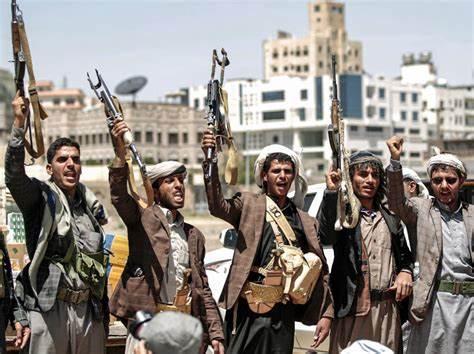
Internal Obama State Department reports conceded, from the start, that “[t]he administration had been following Iran’s meddling in Yemen—the presence of Revolutionary Guard agents, Hizbollah’s role, and some weapons smuggled into the country—but saw this largely as efforts to ‘aggravate and pinprick and undermine’ Saudi Arabia rather than ‘some kind of grand Iranian plan to take over the peninsula.’”[18]
UN expert panels estimated that Iran provided Houthi with approximately 2,000 firearms in the first year of the Coalition attack against Yemen, with the vast majority of their arms acquired from domestic weapon depots.
The panels concluded that they had “not seen sufficient evidence to confirm any direct large-scale supply of arms from the government of the Islamic Republic of Iran.”
Similarly, even the Atlantic Council, a NATO-funded propaganda outlet, reported in a study from 2017: “There is certainly evidence of Iran supplying limited amounts of mainly small weapons and advisers to the Houthis. However, tangible evidence for Iranian military assistance in the form of heavy weapons that could decisively change the course of the war is scant….With or without Iran’s involvement, the underlying structure of the conflict and Houthi grievances would likely be the same.”[19]
Perhaps one could argue that the small amounts of weapons supplied by Iran are uniquely effective. There is evidence one can turn to for that, too, but do not expect it to be reported in the “free press.”
The UN appointed Panel of Experts on Yemen (dissolved last year following extreme Saudi pressure), was “aware of only one attack with a cruise missile and three with longer range ballistic missiles in 2021; this, in its view, suggests that the Houthis continue to struggle to acquire more sophisticated components for longer range systems from abroad,” and the “handful of attacks with longer-range drones and missiles caused limited damage. Their primary purpose was not military, but political….The Houthis’ primary goal with such strikes is to pressure its adversaries and build leverage for eventual negotiations”—unlike Western-supplied weapons to the Coalition, worth hundreds of billions of dollars, used for the impressive slaughtering.[20]
Or consider the facts reported by Annelle Sheline, one of the leading scholars on contemporary Yemen, regarding the constant panic about Yemen’s “Iran-supplied” missiles used in self defense on Saudi targets:
“The Saudi-led coalition has carried out more than 24,800 air raids since 2015 [killing tens of thousands of civilians …In contrast, the Saudi coalition spokesperson reported in December 2021 that the Houthis have launched over 400 missiles and over 800 drones at Saudi Arabia since the start of the war in March 2015, killing 59 civilians. Added together…If the U.S. had genuinely withdrawn support for Saudi offensives, the rate of coalition air raids should have declined from the Trump era to the Biden era, but it has not. Instead, coalition attacks began to increase dramatically in late 2021.”
Sheline goes on: “Without the assistance of U.S. military contractors, two-thirds of the Saudi Air Force would be unable to fly,” thus immediately ending the Coalition’s primary tool of attack and conquest, ending the war. However, none of this suits the purposes of ideological warfare, and therefore cannot be reported.[21]

Being too silly to merit discussion among serious circles, the Iran-focused agitprop is now discarded as cheap propaganda even in Western scholarship. Thus, elite Western security analysts openly concede that “The Houthis are a self-sufficient entity. They don’t need Iranians to be on call…The Houthis are fairly autonomous in their decision-making” (Andreas Krieg, King’s College, London).[22]
The most authoritative work yet on the Houthi movement, a 300-page volume published last fall, informed that “we learn that far from the simplified notion that the Houthis are an Iranian proxy, they actually operate interdependently and are, rather, ‘aligned’ with Tehran…the Houthi-led National Salvation Government has its own foreign policy, which mainly revolves around seeking wider support for the struggle against foreign aggression in Yemen.
Despite attempts to forge stronger international relations, severely limited as they are, the Houthis find themselves with little foreign policy space amid the overarching rivalry between Saudi Arabia and Iran.”[23]
The standard on the topic, the Routledge Handbook of U.S. Counterterrorism and Irregular Warfare Operations, published in 2021, includes a chapter on Yemen and Iran specifically, written by Oxford’s Elisabeth Kendall, perhaps the leading Yemen scholar in the world. In it, she writes: “The Houthi ‘coup’” in 2015, with the vast support of the population and even our puppet President’s own army, “was thus generated by domestic concerns relating to the control of resources and power rather than by ideological principles externally nurtured by Iran.”
“There is evidence of Iran and its Lebanese proxy, Hezbollah, providing weapons and military advisors to the Houthis. This was likely not as significant at this point in the conflict as their opponents claimed, and there is little evidence of Iran supplying the Houthis with heavy weapons in the early stages of the war.” Additionally, “It was not Iranian assistance that explains the Houthi success,” but rather internal political maneuver and support. Most importantly, “The Houthi relationship with Iran is based on pragmatism rather than command and control,” and in fact lessening in military support over the years.[24]
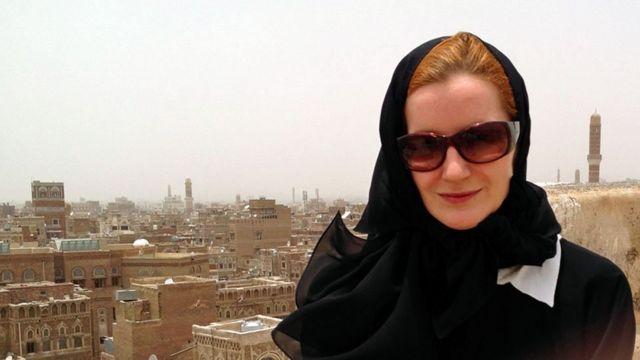
But all of this is beside the point and essentially completely irrelevant because there is no reason why Iran would not have the right to send arms to a country defending itself from a gang of murderous terrorist states. Any indication that Yemen would try to acquire the arms necessary for it to defend itself causes unspeakable fury in the West which, on the other hand, apparently has a God-given right to supply the aggressor, and in fact is the aggressor.
The principle is therefore clear enough: We have the right to attack anyone we like, and the victim trying to defend itself is an unspeakable transgressor. A person who has not yet lost a modicum of sanity will notice the spectacular Western hypocrisy in analyzing their tens of billions of dollars in sophisticated armaments going to Ukraine, supposedly to “defend it,” which is being sent simultaneously as we block Yemen from arming themselves, while nobody in the media or the general culture reacts. This has to be considered as one of the greatest ever achievements of thought control and brainwashing, achieved by the most powerful and vicious propaganda system in history.
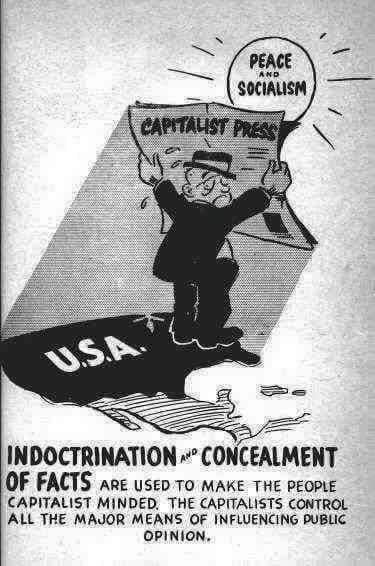
Thus, on June 5, the White House published another routine hypocrisy and lie-filled denunciation of Iran for its “interference in the internal affairs of” Yemen, and “its support for terrorism through its armed proxies, and its efforts to destabilize the security and stability of the region.” Immediately after that, the U.S. State Department sent $5 billion in missiles to both Saudi Arabia and the UAE. That one would have made Orwell gasp for air.[25] [NOTE: It’s unclear whether the $5 billion was the combined total to Saudi Arabia and the UAE or whether each of them received $5 billion.]
We now return to the events in the summer and early fall of 2022, illustrating further what the “truce” actually meant in the real world. In July and August, Yemeni media reported that “U.S. military units deployed” on Yemeni ports along with Saudi troops to crush a potential “rebellion against the Riyadh-formed” and unelected military Junta.
Shortly thereafter, UAE ships arrived in Yemeni ports “carrying huge military reinforcements” to supply their proxy forces in the country, occupying it. Thus, the standard procedure of plundering a defenseless victim with impunity could go on, why Yemen’s national oil authority remarked that one of their ships carrying huge amounts of gasoline, despite receiving a UN permit to travel freely, was seized by the Coalition, thereby making it five ships in total illegally being held at that time. Again, it must be stressed that the terrorist occupying states are in no need of gasoline. But resistance has to be punished.
Meanwhile, the French Foreign Legion was sent in to occupy southern parts of Yemen by France, in order to gain “access to the area” and “secure south Yemen’s gas exports” for cheap and easy plundering, just like the good old days.
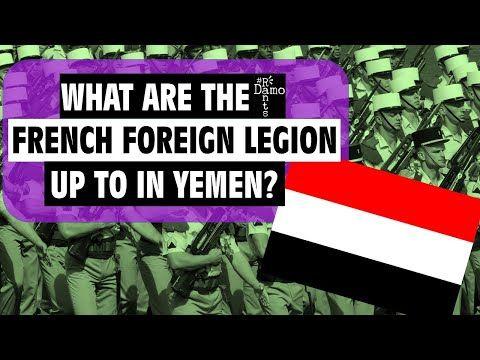
A few days later, another Yemeni ship was captured by the Coalition, stealing approximately $200 million in oil. In a stunning outburst of (accidental) honesty, a leader of the Coalition-imposed Junta—Vice President al-Bahrani—warned warring parties from fighting, since it would jeopardize Western “oil and gas investments” in Yemen. He further noted: “I tell you frankly this is what I have seen from European, American and Arab officials,” who will make “large oil and gas investments” in Shabwa, Hadramout and Mahra, the major oil rich regions, heavily occupied by the Coalition.
The Vice President also stated that securing these “investments”—outright plundering—“will be our priorities,” thus making it clear that the official policy of the Junta is solely to secure plundering and occupation by its foreign masters.
In October, the UAE seized mineral and gold mines, stealing tons of gold, while establishing, along with France, ports in Shabwa to steal and export Yemen’s liquefied natural gas (LNG) to foreign vessels. This was done under the aegis of the destroyer USS Cole patrolling the shores of Yemen, while American military delegations on the spot explored routes for extracting oil resources. A UN report noted:
“The Saudi-led countries…have found the appropriate opportunity to realize what were in the past wishes…Those wishes have become within reach…The U.S.-backed coalition countries have sought hard to tear the country apart and create weak entities [in Yemen] through which they could control the country, its wealth and capabilities…the coalition countries have turned southern and eastern Yemeni provinces, which contain huge wealth of oil, gas, gold and other minerals into a land where there is no national sovereignty…companies…have been brought in to loot Yemeni wealth and antiquities and control the islands, ports and coastal lines of strategic importance.”[26]
Yet another remarkable illustration of the West’s unquestionable right to invade, occupy and plunder was illustrated by a cardinal sin by the attacked victim, which caused unspeakable anger and fury. Namely, I am referring to when Yemen, between October and November, warned multiple times against numerous foreign vessels attempting to dock the occupied ports to ship stolen LNG, and after these ignored the warnings, tried firing defensive missiles at them.
That caused almost hysterical outrage in the West. The occupying countries in the EU expressed “deep concern about the unacceptable threats by the Houthis to attack oil companies and commercial shipping in neighboring countries,” and required “the Houthis to moderate their demands.”
The U.S.’s Yemen envoy Steven Fagin, in yet another Orwellian triumph, warned that Yemen trying to prevent mass plundering of its resources would “only harm the Yemeni people by worsening fuel shortages.”[27]
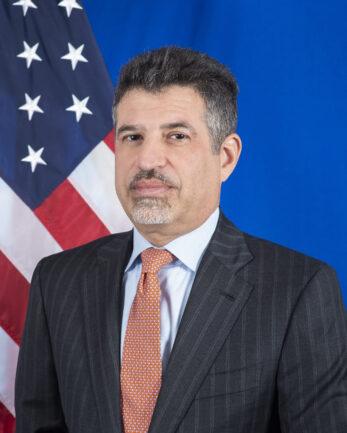
An international report by Reuters, cited by the few papers which covered the events, denounced the “escalation” by “the Iran-aligned Houthis,” while remaining silent about the ongoing occupation, attack and plundering, thus exposing the newswire’s actual role as a servile tool of government propaganda. The next day, incidentally, yet another Yemeni gas ship was seized by the Coalition. Total silence, as usual.[28]
In fact, since Yemen transgressed the universally held sacred principles of the West which say that the aggressor must reserve the right to do anything it feels likes, and that the attacked must not defend itself, the U.S., France and other military Coalition leaders officially decided to declare that the “Houthi menace” is “an international threat.”
What this tacitly shows is that Yemeni oil and wealth does not actually belong to the people of Yemen, or the country itself, but rather to us, a priori. UN envoy Hans Grundberg (government official from Sweden, a country deeply involved in the attack), warned that “attacks on oil” infrastructure and Arab-Western “oil companies” used to plunder the nation “undermines the welfare of the entirety of the Yemeni people,” thus exposing the UN’s well-known corruption and compromise. In short, the Yemeni people, we may then add, are solely the elite elements under control of the attacking and occupying Coalition, conducive the needs of Western oil corporations.
Another stunning illustration of Western “values” was the U.S. Navy intercepting a small ship carrying Iranian AK rifles going to Yemen for its self-defense. The Navy took them and said that they were “considering sending seized Iranian weapons to Ukraine” in its self-defense against Russia. We may speculate how moralists in the West would react if the Russian fleet intercepted Western arms in Poland or Romania to send them to Yemen, claiming to uphold the universal right of sovereignty and self-defense of all nations.[29]
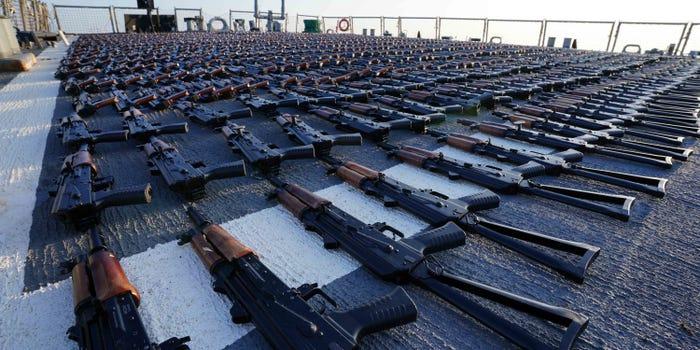
Although actual critics of the attack on Yemen, on non-propaganda and principal terms, had no access to the press, the major journals lended themselves open to Saudi generals explaining that “Saudi Arabia’s stance on protecting Yemen’s sovereignty remains unequivocal…It is imperative for Saudi Arabia to preserve peace in Yemen.” Therefore, “It is a war of necessity, not a war of choice for the Saudis.” What is shocking is not that it was published (that is to be expected), but rather that it elicited no reaction of utter contempt and hysterical laughter.[30]
Meanwhile, foreign government-funded propaganda warned of “Iran transferring the technology and parts necessary for the Houthis to increase their reach to the point of being able to reach Israel is likely increasing” (no evidence provided). Once again the inalienable Western doctrine that we must be free to attack anyone we desire, and that nobody is allowed to defend themselves, is put on full display with no reactions, since essentially everyone agrees, of course.[31]
The European press denounced Houthi for bothering “Europe” and its “vantage point” in “energy exportation,” and going so far as describing Yemen’s fending of pirates as “Iranian efforts” to attack “Europe” and “holding Yemen hostage” (The National)—an unspeakable propaganda triumph that would have made even Goebbels cringe.[32]
Therefore, the reactions were entirely predictable and natural when the media were given State Department and Saudi General Staff notes on what to report, when they found alleged Iranian arms (a couple of thousand AK rifles and RPGs hidden in cow manure onboard old fishing vessels, intercepted by American, British and French destroyers and frigates patrolling Yemeni waters). U.S. Navy spokesman Commander Timothy Hawkins was concerned since “weapons from Iran to Yemen leads to instability and violence.”[33]
The media responded to this blatant and vulgar propaganda coup by loyally marching in the jingoist parades in general euphoria and joy for our leaders, and wrath against “the enemy” for daring to disobey our commands. The journals were particularly angry about our forces not being able to “export oil” from occupied territory, accusing the “Iran-aligned” Yemenis of themselves having “destroyed Yemen’s economy,” as The Jerusalem Post put it.
By the way, the same Post observed shortly after, that the key “obstacle to a permanent, peaceful settlement in Yemen” is the “Houthis, supported by sophisticated Iranian weaponry,” offering no evidence for the charge, and omitting the West’s not only “sophisticated” but necessary weaponry to keep the attack going. Also another contributing factor, it said, is the Coalition’s “internal conflict.” The meaning of that is pretty straight forward: If the Coalition were just more efficient at attacking and destroying the occupied enemy, it would be able to totally crush the indigenous population, thereby achieving “a permanent, peaceful settlement in Yemen.” In late October, Yemeni media published a record of Coalition-seized Yemeni oil ships, totaling billions of dollars in value.[34]

We return to the timeline of events, from November 2022 until the beginning of January 2023. On November 16, Emirati documents were leaked to the Middle Eastern press, showing that the UAE sought to expand their occupation of strategic Yemeni islands. Namely, militarily transforming the Mayyun island (Perim) and expelling the indigenous population, giving tactical access to the strait of Bab-el-Mandeb between Somalia and Yemen.[35]
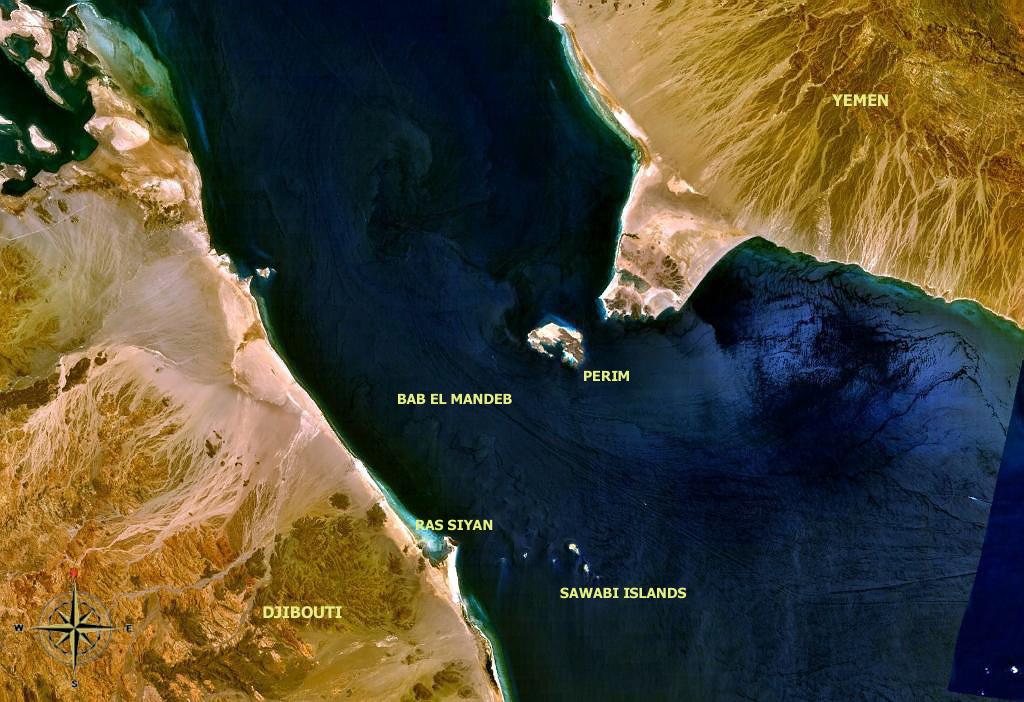
One day prior to that, one might add, Coalition forces sent “shipments of weapons at Aden airport,” under control of proxy UAE forces, while also conducting military operations with “military planes” and “intensive flying of drones” to ensure that occupation can go on with little or no disturbance.[36] A few weeks later, Saudi Arabia sent even more military forces to the oil-rich Hadramout while bribing local tribes to enlist them as mercenaries, an old trick, while also simultaneously establishing new military runways at Socotra island for military use. The island is already under Israeli occupation.[37]
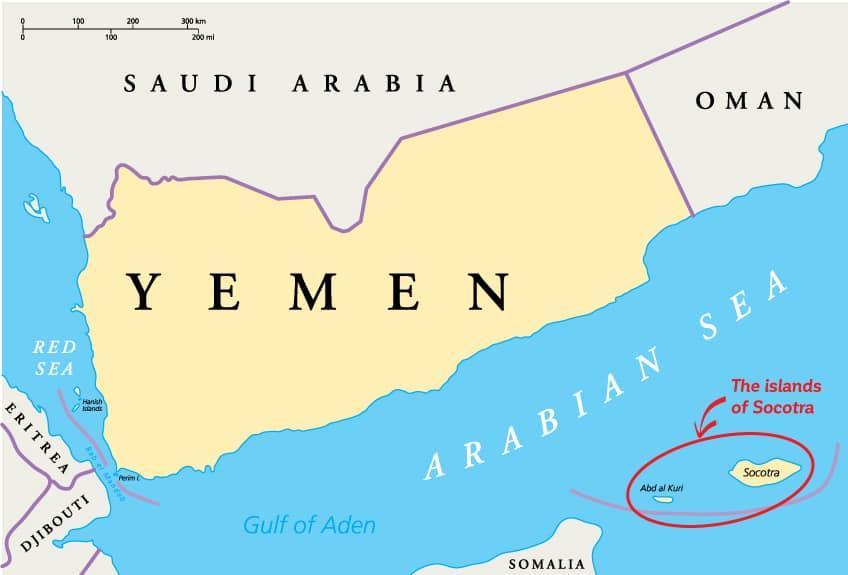
On November 8, a ship carrying fuel going to Yemen was intercepted and seized by the Coalition, just outside Djibouti while, on the very next day, the governor of Aden (Yemen’s temporary capital since 2015) claimed that the Americans had met with their Yemeni puppets in order to implement “a two-pronged plan, the first of which is to approve an American request to secure the oil and gas fields in the east of the country, and the other to use smuggling ports to transport shipments out to sea.” That meeting has not been confirmed, but the facts on the ground are unequivocal, to be sure. On November 11, the Coalition seized three ships carrying diesel just outside Sanaa.[38]
Most interestingly, the Middle Eastern information system was more or less openly conceding that the mass-scale plundering was going on. Coming straight from the horse’s mouth, Emirati print media (Al-Emarat Al-Youm) quoted officials stating that “France, Britain and the United States decided to form a joint unit for” securing illegal oil exports “in Shabwa and Hadramout…at the request of the Riyadh-formed” Junta. This too, was too taboo for the “free press,” revealing our sophisticated understanding of conducting ideological warfare on the home front.[39]
In mid-December, the Coalition seized yet two more Yemeni fuel ships, once again to enforce discipline on the disobedient. The very same day this was reported, “strategic depots” were “being prepared by the U.S. forces” occupying a civilian airport in Mahra province, eastern Yemen.[40]

The reader of this has to bear in mind truly how little this affected the media propaganda version about the situation in Yemen—since none of this has been reported in the West. Thus Stephen Pomper and Michael Wahid Hanna, former Obama official and NYU Law School expert, respectively, could write in Foreign Affairs[41] in early December that there had been, since April, “a political settlement for a conflict that has pitted Houthi rebels, who control large parts of the country and are backed by Iran, against the internationally recognized Yemeni government.”
But there is a problem. Namely that “the Houthis have resumed their intermittent attacks on Yemen’s oil-exporting infrastructure,” not explaining why, of course, since it would give the game away. They go on: “There is little Washington can do to create [peace]. For whatever positive impact the Biden administration’s efforts have had—and they have had one”—(of course without giving a single example)—“the United States has neared the end of what its waning influence over the Saudis and Emiratis can achieve.”

One might easily think of examples to the contrary, however difficult they may be to consider for elite-educated intellectuals. For example, the United States could stop lending its support to the Coalition Air Force, thus practically immediately ending the attack. Annelle Sheline has pointed out that, “without the assistance of U.S. military contractors, two-thirds of the Saudi Air Force would be unable to fly.”[42]
Pomper and Hanna go on to describe the Houthi “demand,” which says that Yemeni oil should belong to Yemen, as “a requirement so outlandish that it appears intended either to foreclose further talks or to humiliate the government and Saudi coalition.” No further comment was perceived as needed, while they praise the foreign-imposed Junta as representing “a broad spectrum of views” and “derive support from different sources,” such as the Saudi and Emirati General Staffs, the British Foreign Office and U.S. State Department, surely with the support from Raytheon, Lockheed Martin, Boeing, ExxonMobil and so on. However, they do criticize the war on the basis that it has become “counterproductive,” much like Russian state media “criticize” the invasion of Ukraine on similar grounds.
In fact, it seems that essentially all of the minimal criticism against the attacking Coalition is purely tactical, not principaled; that the invasion and attack is costing us too much, giving us bad looks and that we will not get away unscathed in our destruction of Yemen. Consider a paper by the Carnegie Middle East Center, published in October 2022, and which in fact is at the outermost end of the spectrum of critique. It criticizes the Coalition for “thinking about militarization” since it is “generating pushback from Yemenis,” and that the invasion has been “detrimental to Saudi interests.” The very thought of us stopping “militarization” against a country because it is illegal, immoral and fundamentally wrong is far beyond the realm of possible discussion in Western culture.[43]
Thus, the first year of the truce may have decreased the number of people killed in actual fighting, but the main principle of the accord, a “halt to all offensive ground, aerial, and maritime military operations, inside and outside of Yemen, and a freeze in current military positions on the ground,” was proven to be a pipe dream before the ink had dried on the paper. The original accord was stillborn and in fact never operational—roughly in accordance with perhaps the only official study on the adherence to the truce.[44]
In January 2023, the Junta leased the major port of Qishn, “rich in various types of rare minerals,” to the Emirati mining company of AJHAM, to export valuable Yemeni resources. Of course, no consultation with the Yemeni people was conducted, then or ever.[45]
That coincided with the French fleet having a military parade off the coast of Yemen,” hoping to cash in “a claim for a share of wealth that is being raced for, specifically in the eastern crescent of Yemen,” as Yemeni press informed.[46]
The very next day, January 5, American forces in Abyan were, in their words, preparing for “fighting terrorism” along with Emirati forces (namely, by conducting international terrorism themselves) in multiple provinces. Well, which ones? “All of these provinces,” it just so happens, are rich in “oil and overlook the most important sea-lanes around the world,” a coincidence, surely. Throughout the month, American military delegations in these areas were expanding their bases, doing heavy lobbying by the gun to gain further control “on the coast of Hadramout in eastern Yemen,” particularly rich in natural gas and other valuable Yemeni resources, which of course ipso facto do not belong to Yemen.[47]
On January 27, Bruce Riedel of the Brookings Institution reviewed the so-called truce, triumphally concluding that there had been general adherence to it. The occupation and plundering, which would have impressed even someone like Leopold II, was not worthy of mention, as per usual. Interestingly, however, Riedel comments on the “virulently anti-American” Yemeni resistance, conceding that “the Saudi war has allowed” it “to play the role of patriotic defenders of a small country fighting a rich neighbor with the backing of Washington and much of the Western world.”

That is very dangerous, since the poor people of the Third World may get some funny ideas and inspiration about independence in the future, which of course is a grim and unacceptable risk. What is more, “air strikes, blockades, and intentional mass starvation are the characteristics of a war the United States has supported”—apparently not participated and been instrumental in the war, we are led to believe, then.[48]
To kick February off, the UAE officially declared its many years’ long annexation of the strategically located Yemeni archipelago of Socotra. However, this was no Russian annexation of Donbas and so, therefore, not worthy of our deep condemnation and upholding of virtuous standards, and naturally the event ended up in the Memory Hole. In mid-February, the Coalition finally let cargo ships headed to Yemen enter the country, almost a year after the truce was enacted, Reuters reported.
On March 2, admirals of the American Navy imposing the vicious blockade on Yemen, along with the CIA and Ambassador Stephen Fagin, arrived in Aden to meet the representatives of the Junta. They met on a newly formed U.S. military base at Al-Ghaydah Airport to discuss “the potential dangers of terrorism”—another word for national independence—and coordination of oil extraction from Yemen. Again, the Yemenis themselves are excluded from such privileges.[49]
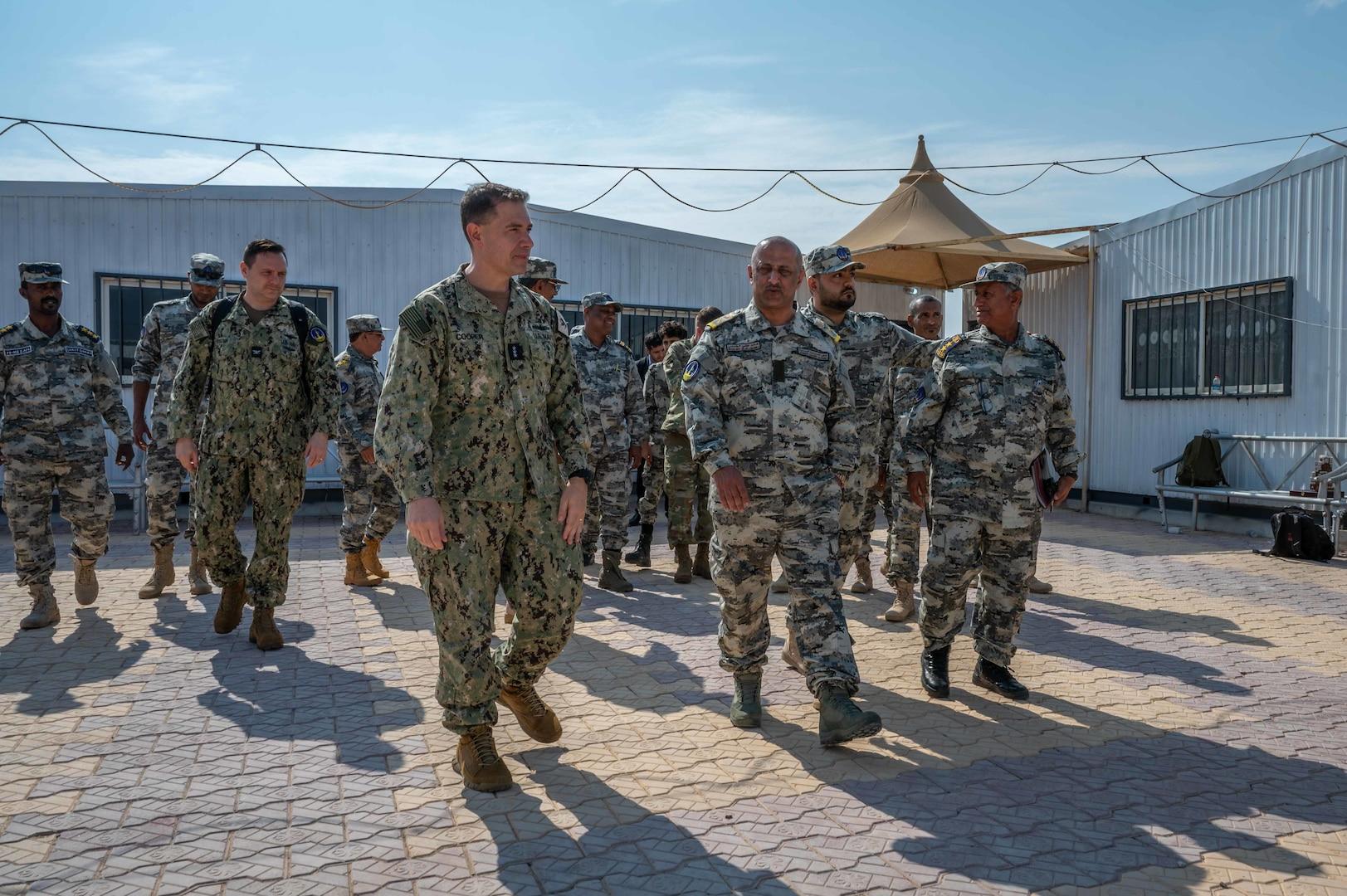
As of mid-March, that is where things stand. As we reach the one-year anniversary of the signing of the truce, we realize that the diplomatic process in fact did very little to resolve the fundamental and core issues of today’s Yemen, namely, that it is being brutally attacked and occupied by foreign powers. This has not fundamentally changed and, as is crystal clear, the media have made themselves accomplices to this massive outburst of terror and violence.

-
As this article was going to press, it was announced that a permanent ceasefire would be signed next week in Sana’a. The Iran-backed Houthi government in Sana’a is to host a delegation representing Saudi Arabia and Oman in Sana’a where the truce is to be signed. According to the Lebanon-based Al-Mayadeen, during the truce, the Saudi blockade of Yemeni ports would be lifted, and the Saudis, along with the UN, would host talks to arrange a two-year transition for establishing a coalition government comprised of the Houthis and some of the Saudi-backed rivals in Yemen. ↑
-
Asa Winstanley, “Saudi aggression in Yemen will fail,” Middle East Monitor, March 31, 2015; Jeannie Sowers, “The Saudi Coalition’s Food War on Yemen,” Middle East Research and Information Project, nr. 289, Winter 2018. ↑
-
Stacey Philbrick Yadav and Jillian Schwedler, “Toward a Just Peace in Yemen,” Middle East Research and Information Project, nr. 289, Winter 2018. For more, see Isa Blumi (2021), “Speaking above Yemenis: a reading beyond the tyranny of experts,” Global Intellectual History, vol. 6:6, pp. 990-1014. The invading Coalition includes multiple Middle Eastern nations, the powerful Western nations, loyal South American countries providing mercenaries, and so on. See Middle East Eye, March 28, 2019. ↑
-
International Crisis Group, ”Ending the Yemen Quagmire: Lessons for Washington from Four Years of War,” US Report #3, April 15, 2019. It goes on: “Moreover, there was the broader relationship between Washington and its Gulf partners to consider. For years those relations—and particularly the relationship between Washington and Riyadh–had been at the core of the U.S. strategy for protecting its energy and security interests in the region….Of course, the U.S. government could have intervened to stop that from happening. It could have suspended the licenses that enabled U.S. contractors to support the campaign, knowing that doing so would likely lead over the course of weeks or months to much of the Saudi air force being grounded. This, however, would have been viewed by both the U.S. and its partners as an extreme step, one that would likely have pushed bilateral relations to the point of rupture. Explained one former official, when faced with difficult policy choices, particularly in the heat of a crisis, the U.S. government ‘doesn’t do extremes.’” [Footnote deleted.] ↑
-
Alastair Sloan, “The war in Yemen will be fought with Western arms,” Middle East Monitor, April 7, 2015. ↑
-
Baher Kamal, ”The Brutal War on Yemen,” Consortium News, March 21, 2022. For example, the Obama-administration alone sent $118 billion in arms, Trump $25 billion, joined by similar amounts by Biden. Meanwhile, European states (especially France, Germany and the UK) have sent closer to $100 billion since the attack was launched. See, e.g., William Hartung, “Arming Repression: U.S. Military Support for Saudi Arabia, From Trump to Biden,” Center for International Policy, November 30, 2021. ↑
-
Noel Brehony, “War in Yemen: No End in Sight as the State Disintegrates,” Asian Affairs, vol. 53:1, September 2020, p. 511; Stephen Day and Noel Brehony, Global, Regional, and Local Dynamics in the Yemen Crisis (New York: Palgrave Macmillan, 2020), p. 20. ↑
-
Middle East Monitor, July 7 2021; Paul Cochrane, Middle East Eye, November 13, 2018. ↑
-
United Nations OSESGY, “United Nations initiative for a two-month truce,” April 2, 2022. ↑
-
Yemen Press Agency (YPA), April 3, 2022. ↑
-
Ahmed Abdul-Kareem wrote in Mint Press News (April 21 2022): ”The millions of tons of munitions that have been dropped on Yemen under the pretext of restoring Hadi’s legitimacy have taken the country back a hundred years and caused the worst humanitarian crisis in the world, with hundreds of thousands of civilian casualties.” ↑
-
Middle East Monitor, August 4, 2022. ↑
-
YPA, May 3 and 31, 2022. ↑
-
YPA, May 5, 2022. ↑
-
Middle East Monitor, June 29, 2022; YPA, May 23, June 12 and 30, 2022. ↑
-
Mareike Transfeld, European Council on Foreign Relations, March 18, 2022. ↑
-
Peter Salisbury and Alexander Weissenburger, ”The Surprising Success of the Truce in Yemen,” Foreign Affairs, June 28, 2022. ↑
-
See footnote 3, supra. ↑
-
Elisabeth Kendall, “Iran’s fingerprints in Yemen: real or imagined?” Atlantic Council, October 19, 2017. ↑
-
Thomas Juneau, Sana’a Center for Strategic Studies, March 14, 2022. ↑
-
Annelle Sheline, ”Numbers don’t lie: more Saudi attacks on Yemen came after new US support,” Responsible Statecraft, March 21, 2022; Sheline, ”Cautious optimism hovers over new ceasefire in Yemen,” Responsible Statecraft, April 1, 2022. ↑
-
Giorgio Cafiero and Emily Milliken, ”Implications of Iran’s domestic unrest for Yemen,” Daily Sabah, October 28, 2022. The article also states that, “compared to Iran-sponsored groups in the Levant, the Houthis have maintained far greater autonomy from Tehran.” ↑
-
Omar Ahmed, ”The Huthi [sic] Movement in Yemen” [book review], Middle East Monitor, October 27, 2022. ↑
-
Michael Sheehan, Erich Marquardt and Liam Collins, eds., Routledge Handbook of U.S. Counterterrorism and Irregular Warfare Operations (London: Routledge, 2021), pp. 83-94. ↑
-
Casey Coombs, Sana’a Center for Strategic Studies, August 12, 2022. ↑
-
YPA, July 25, August 14 and 19, September 17, and October 5 and 11, 2022; Antiwar, July 25 and August 19, 2022; Daily Yemen, September 29 and November 3, 2022. ↑
-
Middle East Monitor, October 6 and November 22, 2022. ↑
-
Reuters, October 21, 2022; YPA, October 22, 2022. ↑
-
Sana’a Center for Strategic Studies, December 16, 2022; Arab News, November 24, 2022.; The Defense Post, February 17, 2023. ↑
-
For discussion on this very matter, see my text in CovertAction Magazine, March 23, 2022, especially note 16; Ahmed Al-Maimouni, “The Saudi War of Necessity in Yemen,” The National Interest, April 30, 2022. ↑
-
Juneau, Sana’a Center for Strategic Studies, December 16, 2022. ↑
-
Damien McElroy, ”Return of truce is vital to Yemen as global food and energy crises take toll,” The National, November 27, 2022. Most interestingly, McElroy writes that “areas of Yemen that are oil hubs, while never unimportant, are now prized as revenue hubs that were less so before.” Of course, being the loyal and most fanatical kind of political commissar that he is, he never explains precisely why. Sana’a Center for Strategic Studies noted (November 14, 2022) that “The Houthi war on the oil and gas sector amounts to a war on Yemeni citizens, which will only bring more pain and suffering to people across the country”—not the plundering of oil and outright occupation, notice, but rather the defense from plunder and violence, constituted “a war on Yemeni citizens.” Yet another truly remarkable exercise in thought control and information warfare. ↑
-
Gulf News, November 16, 2022. ↑
-
The Jerusalem Post, December 9, 2022, and January 2, 2023; Daily Yemen, October 28, 2022. ↑
-
Hodhod Yemen News Agency, November 16, 2022. ↑
-
YPA, November 15, 2022. ↑
-
YPA, November 16, 21 and 25, 2022. ↑
-
YPA, November 8, 2022; Daily Yemen, November 9 and 11, 2022. ↑
-
Hodhod Yemen News Agency, November 16, 2022. The theft of Yemeni resources also took more petty manifestations. The Middle Eastern media could reveal that “Over 4,000 of Yemen’s historical artifacts have been looted and smuggled out of the country where they have been auctioned off in six countries, including the U.S. a recent report has revealed.” Continuing: “Last year, the Al-Hudhud Center claimed that the Saudi-led coalition, which has been waging a war against Yemen since March 2015, had destroyed about 9,812 historical sites including three recognized as UNESCO heritage sites.” See Middle East Monitor, November 20, 2022. ↑
-
YPA, December 14, 2022. ↑
-
Stephen Pomper and Michael Wahid Hanna, ”How to End Yemen’s Forever War,” Foreign Affairs, December 2, 2022. ↑
-
Sheline, ”Cautious optimism hovers over new ceasefire in Yemen.” ↑
-
Ahmed Nagi, “The Pitfalls of Saudi Arabia’s Security-Centric Strategy in Yemen,” Carnegie Middle East Center, October 12, 2022. The report differs quite radically from the rest of Western propaganda, stating that Saudi Arabian institutions have held as a right “to meddle in Yemeni affairs…[and] laid bare Riyadh’s priorities, which were to contain and redirect political trends [in Yemen], whether democratic or other, that threatened the pro-Saudi political order in Yemen…More and more, Riyadh began to fear that developments in Yemen might lead to a popular takeover of government and, worse yet, reignite protests in Saudi Arabia. Eventually, with Saudi backing, Saleh forcefully suppressed the Arab Spring–inspired unrest…In fact, the irony is that the Saudi-led coalition’s campaign served to solidify and subsequently strengthen the bond between the Houthis and Iran.” Though, Nagi apparently sees nothing fundamentally wrong with a country militarily and otherwise meddling in other nations. ↑
-
Armed Conflict Location & Event Data Project, “Violence in Yemen During the UN-Mediated Truce: April-October 2022,” October 14, 2022. ↑
-
YPA, January 2, 2023. ↑
-
Daily Yemen, January 4, 2023. ↑
-
Daily Yemen, January 5, 2023; Al Khabaral Yemeni, January 27, 2023. ↑
-
Bruce Riedel, “The Houthis after the Yemeni cease-fire” Brookings Institution, January 27, 2023. ↑
-
YPA, February 11 and March 3, 2023; Reuters, February 26, 2023. ↑
CovertAction Magazine is made possible by subscriptions, orders and donations from readers like you.
Blow the Whistle on U.S. Imperialism
Click the whistle and donate
When you donate to CovertAction Magazine, you are supporting investigative journalism. Your contributions go directly to supporting the development, production, editing, and dissemination of the Magazine.
CovertAction Magazine does not receive corporate or government sponsorship. Yet, we hold a steadfast commitment to providing compensation for writers, editorial and technical support. Your support helps facilitate this compensation as well as increase the caliber of this work.
Please make a donation by clicking on the donate logo above and enter the amount and your credit or debit card information.
CovertAction Institute, Inc. (CAI) is a 501(c)(3) non-profit organization and your gift is tax-deductible for federal income purposes. CAI’s tax-exempt ID number is 87-2461683.
We sincerely thank you for your support.
Disclaimer: The contents of this article are the sole responsibility of the author(s). CovertAction Institute, Inc. (CAI), including its Board of Directors (BD), Editorial Board (EB), Advisory Board (AB), staff, volunteers and its projects (including CovertAction Magazine) are not responsible for any inaccurate or incorrect statement in this article. This article also does not necessarily represent the views the BD, the EB, the AB, staff, volunteers, or any members of its projects.
Differing viewpoints: CAM publishes articles with differing viewpoints in an effort to nurture vibrant debate and thoughtful critical analysis. Feel free to comment on the articles in the comment section and/or send your letters to the Editors, which we will publish in the Letters column.
Copyrighted Material: This web site may contain copyrighted material the use of which has not always been specifically authorized by the copyright owner. As a not-for-profit charitable organization incorporated in the State of New York, we are making such material available in an effort to advance the understanding of humanity’s problems and hopefully to help find solutions for those problems. We believe this constitutes a ‘fair use’ of any such copyrighted material as provided for in section 107 of the US Copyright Law. You can read more about ‘fair use’ and US Copyright Law at the Legal Information Institute of Cornell Law School.
Republishing: CovertAction Magazine (CAM) grants permission to cross-post CAM articles on not-for-profit community internet sites as long as the source is acknowledged together with a hyperlink to the original CovertAction Magazine article. Also, kindly let us know at info@CovertActionMagazine.com. For publication of CAM articles in print or other forms including commercial internet sites, contact: info@CovertActionMagazine.com.
By using this site, you agree to these terms above.
About the Author

Andi Olluri lives in western Sweden.
He just turned 20 and is studying dietetics.
Andi has been an activist since he was a young teenager.
He can be reached at andi_ronaldo@hotmail.se.


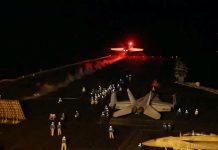


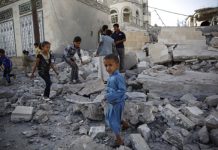
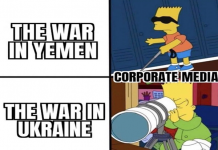
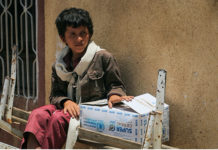
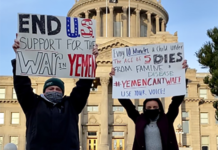

[…] CovertAction Magazine 11 April 2023 […]